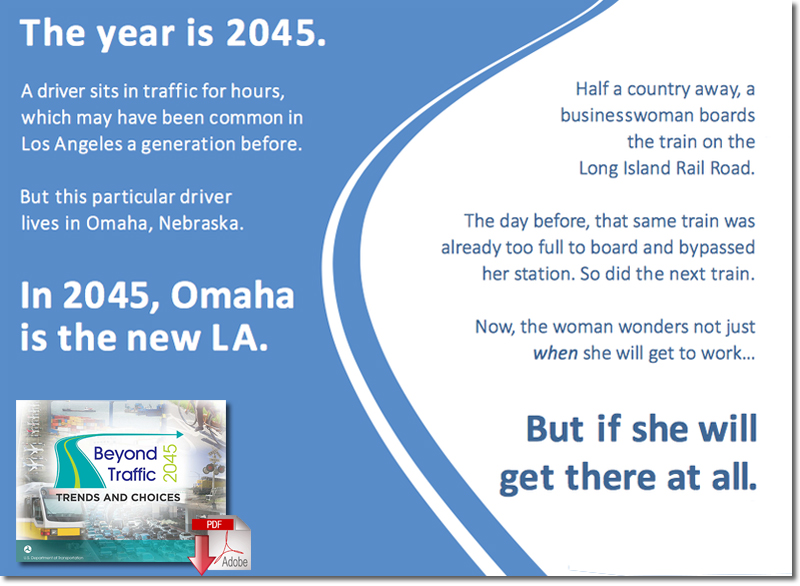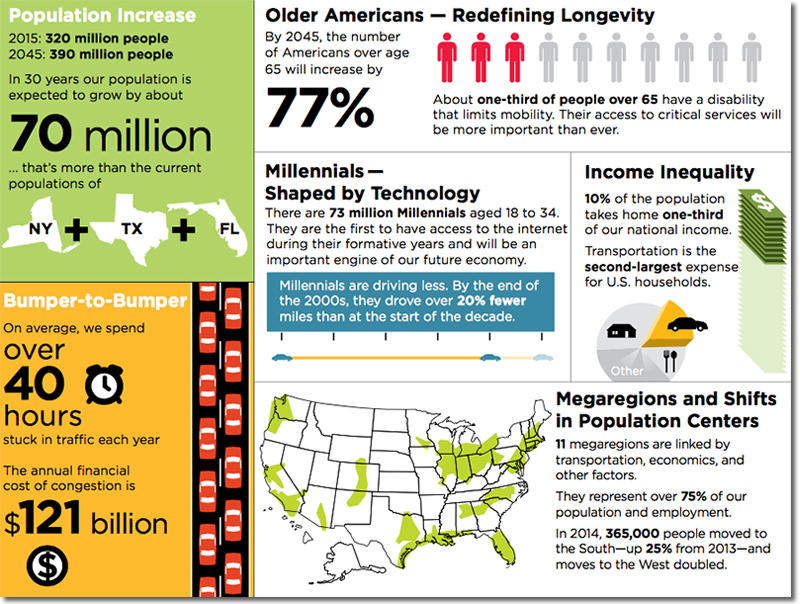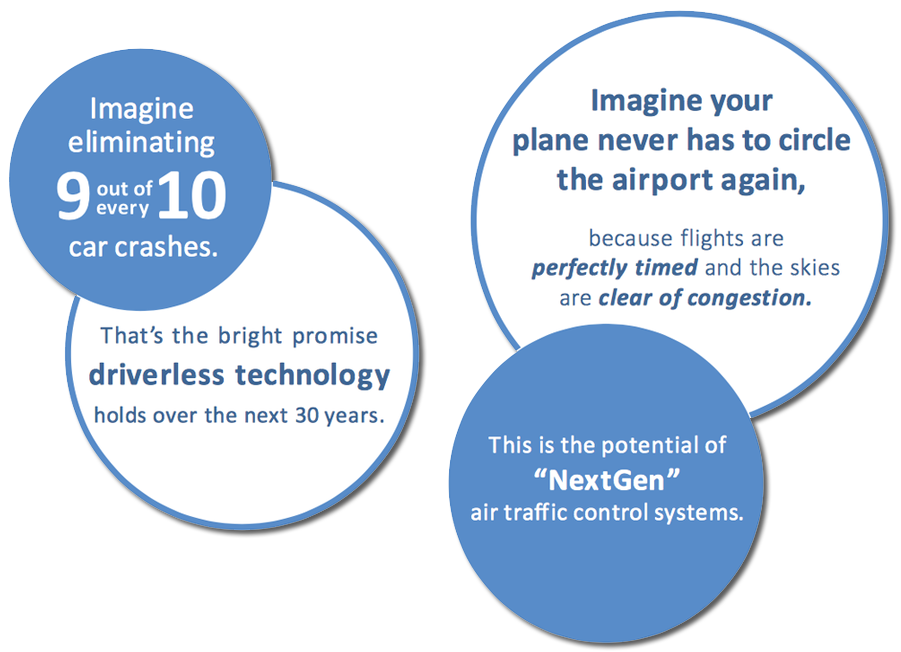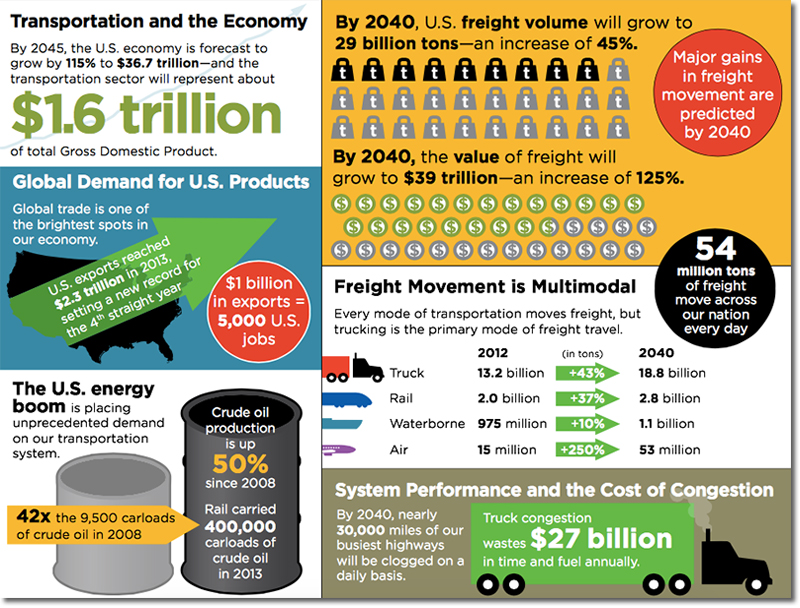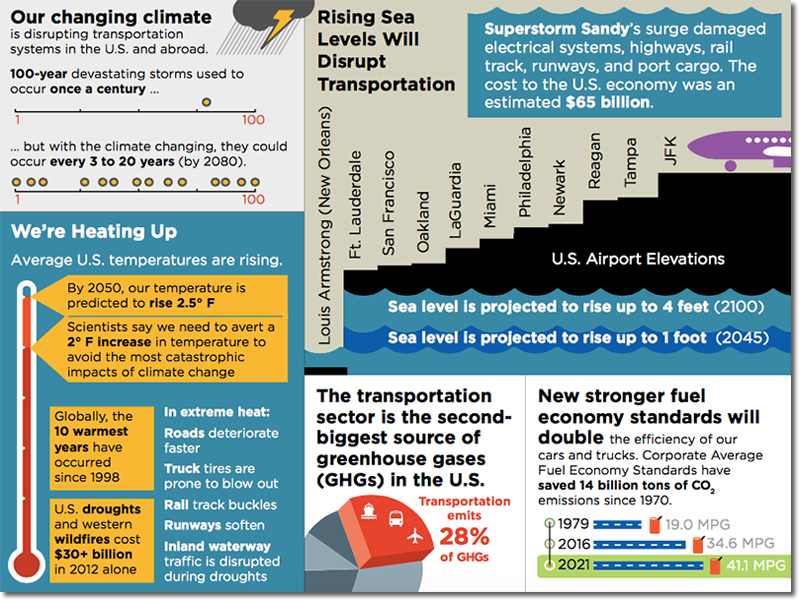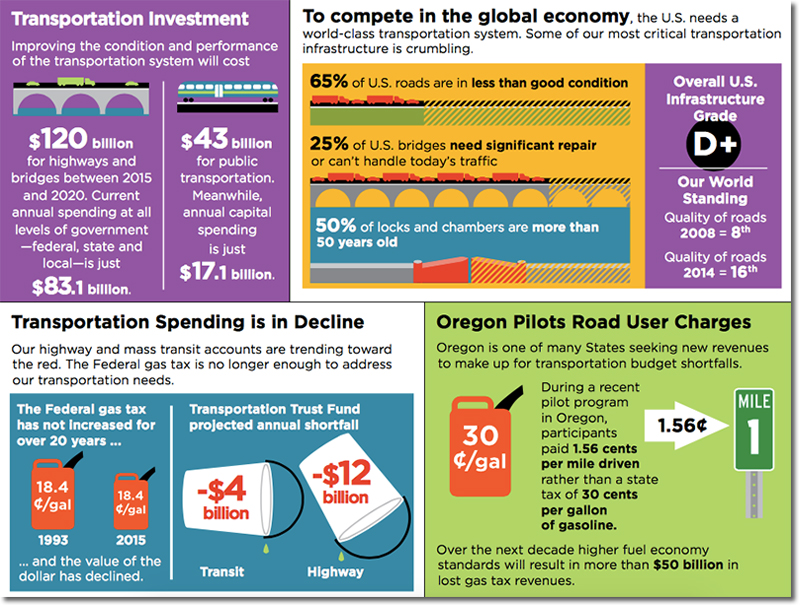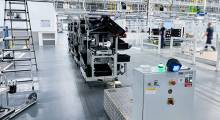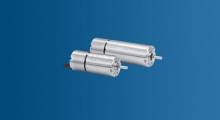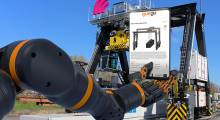As far as USDOT secretary Anthony Foxx is concerned, pretty much everything is in bad shape and getting worse: roadways, railways, waterways, the whole nine yards.
The problems are endless: ancient infrastructure is crumbling without the money to repair or replace it.
Renewable energy strategies aren’t materializing quickly enough.
Rapidly growing urban centers are buckling under the weight of the commuting residents that occupy them. And all the while, the specter of global warming threatens to quite literally sink everything.
In a perfect world, the DOT would be coming to the table with a slate of solutions - not problems - but it’s not. Instead, it’s calling Beyond Traffic “an invitation to a conversation” about how to fix things. “Everyone uses our transportation system, which means anyone can help build its future,” a slide deck highlighting the study reads.
Here are 6 major takeaways from the Beyond Traffic study:
We’re basically doomed unless we radically change things
“America’s transportation system is a fossil in 2045,” reads the slide deck. That’s not wrong: even today, American bridges are regularly cited as being structurally deficient with no replacements in sight. It warns about the rise of new urban centers - “Omaha is the new LA” in the DOT’s dystopian vision of the future - and rail systems so overcrowded that trains never actually stop to pick anyone up. No one can get to work.
The USDOT seems to be really excited about millennials and ride sharing
The study makes reference to several trends unique to younger people - a downturn in driving paired with a huge uptick in the acceptance of technology. “Data enables innovative transportation options, such as car-sharing, ride-sharing, and pop-up bus services, and more rapid delivery of goods,” the presentation notes. (Notably, Ford announced at CES this year that it’s testing practically all of these things.) This might ultimately be terrible news for car lovers, but great news for the environment, infrastructure budgeting, and just about everything else.
Self-Driving Cars Are Definitely Happening, Because the Regulatory People Are On Board
It’s widely understood that the biggest hurdle to getting self-driving cars on the roads over the next couple decades won’t be a technological one - it’s regulatory. Lawmaking is almost always a bureaucratic nightmare, with special interests pulling strings and naysayers gumming up the works.
For companies like Google (and now Uber) and major automakers pursuing their own self-driving projects, though, this is probably good news: Beyond Traffic makes reference to the advent of driverless tech. “Imagine eliminating 9 out of every 10 car crashes. That’s the bright promise driverless technology holds over the next 30 years,” the presentation reads. A three-decade time horizon probably isn’t what Google has in mind, but at least they’ve got the Department of Transportation talking about it in a sharply positive light.
Related: Uber Building Research Robotics Lab to Start Autonomous Taxi Fleet

Freight is a huge problem, and it’s going to get bigger
People like stuff, it turns out - and that stuff has to move around the globe. It’s got to get built, get distributed, and get delivered. All of that takes energy and space on the road, the rail, and the water.
Obviously, that’s a particularly thorny problem to solve, because in a healthy economy, you still want stuff moving from producer to consumer. There aren’t any good answers in the study, but part of the solution could simply come from more efficient routing of cargo traffic: there’s the FAA’s NextGen air traffic control, for instance, which the report calls out by name. It routes aircraft in and out of busy airports more efficiently. “Imagine your plane never has to circle the airport again, because flights are perfectly timed and the skies are clear of congestion.”
The USDOT is as scared of climate change as anyone else
Radically increased storm frequency, rising sea levels, and higher average temperatures will all wreak havoc on nearly every aspect of the US’ transportation infrastructure - a particularly telling graphic shows how New Orleans’ Louis Armstrong airport will be several feet underwater by 2045, and even deeper by 2100. Ft. Lauderdale, San Francisco, Oakland, New York’s LaGuardia, and a host of other major airline hubs aren’t far behind.
And for the USDOT, the worst part of all of this is that transportation systems are among the biggest contributors to the greenhouse gases that cause climate change. Tighter regulations on auto fuel economy help, but they probably don’t go far enough.
No one wants to spend any money on infrastructure
It’d be one thing if the money existed to solve all of these problems, and government agencies just needed to figure out how and where to spend it. But it’s actually much worse: Beyond Traffic notes that the government is spending less on infrastructure when adjusted to inflation, in part because the federal gas tax of 18.4 cents per gallon has remained constant over over 20 years. The study says that the trust fund tasked with repairing federal transportation infrastructure will have a shortfall of $12 billion for highway maintenance alone.
All of this comes as 65 percent of American roads are graded as being in “less than good condition,” and 25 percent of bridges are in bad shape.
Source: The Verge
Read: Future of Transportation & Autonomous Flying Cars

Article topics
Email Sign Up





